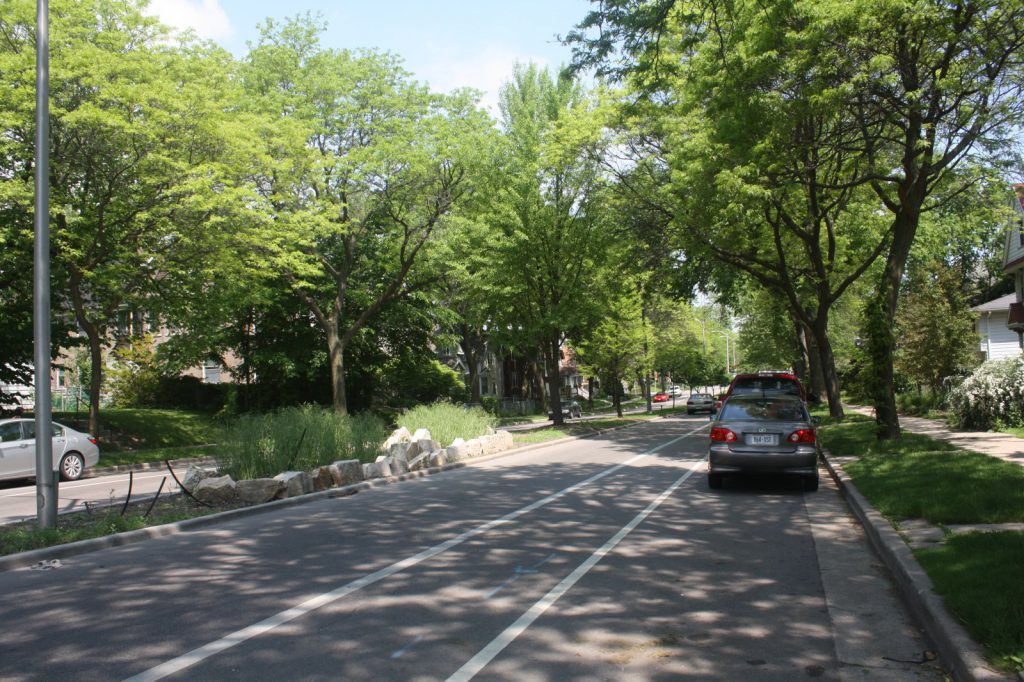Where Do City’s Felled Trees Go?
City cuts down and replaces some 3,500 trees per year. What does it do with the wood?
Lumber became headline news in 2021 when prices jumped more than 300% amid a pandemic-induced production slowdown and a surge in demand. Could the City of Milwaukee’s street trees help solve the problem?
Alderwoman Milele A. Coggs said a number of developers reached out to her about how the rising lumber costs were complicating their development projects.
The City of Milwaukee has approximately 189,000 street trees. Between 3,000 and 4,000 trees are removed (and mostly replaced) annually, including 900 ash trees under a 2020 federal grant and 660 trees from an August 2021 storm.
Ian Brown, the Department of Public Works urban forestry district manager, said the city has a plan in place for how it leverages the felled trees.
“A number of local projects have utilized our lumber,” said Brown. “Ultimately this is a cost avoidance measure for us and a way to get the highest best use out of the wood that we have.”
Historically, the city sent the trees with the rest of its trash to a landfill. In 2021, that would have cost $51 per ton. But under a 2014 agreement, the trees instead go to Kettle Moraine Hardwoods in Hartford. The company takes the wood for free, the city just has to pay to get it there. Those costs work out to $29 per ton.
Sixty-five percent of what Kettle Moraine receives from the city becomes mulch, firewood or wood biomass (pellets burned for energy production). The remaining 35% becomes higher-grade lumber.
But that remaining wood isn’t likely to be suitable to build a four-story apartment building.
“A lot of what we produce is not considered the same grade as something that was cultivated and grown for timber purposes,” said Brown. The trees have more branches, crotch unions and, likely, more damage than something commercially grown.
Unlike commercial competitors, a city street tree also could have metal nails embedded in it. Kettle Moraine Hardwoods uses a metal detector to avoid destroying its blades.
“We will never be the lowest cost option,” said Brown.
But the wood, primarily Norway maple, has character and a good story. It’s increasingly finding its way from Kettle Moraine Hardwoods into various small projects.
Wudeward Urban Forest Products has used it to create a variety of products including concession stands in Fiserv Forum and shelving for high-end apartments in the Historic Third Ward. Hoppe Tree Service sells its products at Milwaukee Habitat for Humanity‘s ReStore home improvement stores. Stairs in the Clock Shadow Building are made from city lumber. Outpost Natural Foods’ store in Mequon has decorative interior cladding made from Milwaukee street trees. And artist kathryn e. martin used trees removed for the construction of the East Library to make two pieces of art on display in the new library.
“We want to make sure it isn’t a best-kept secret,” said committee chair Ald. Jose G. Perez. Both council members pushed Brown to find a way to get the word out about the availability of the wood.
Coggs and Perez also asked how people could get access to the trees.
The answer is to make the trip more than 20 miles northwest to Hartford.
“Kettle Moraine takes everything and that is critical to our model,” said Brown. The model, which sends 12-ton trailers full of trees to Hartford, has reduced injuries amongst city workers who don’t have to break down the trees. The city also avoids having to sort and store the stream of tree pieces. Brown said the city saved more than $51,000 in 2021 in avoided disposal costs.
“Unfortunately the scale of their model isn’t something that they could up and move to Milwaukee. We have had that discussion,” said Brown.
And even if the trees can’t be used to build a new building, Brown said the living trees provide a substantial environmental and aesthetic benefit. “Milwaukee has a large canopy. That’s something we’re very proud of,” said the DPW staffer. The city’s forestry manager previously estimated the canopy produces annual benefits in excess of $19 million per year.
If you think stories like this are important, become a member of Urban Milwaukee and help support real, independent journalism. Plus you get some cool added benefits.






















